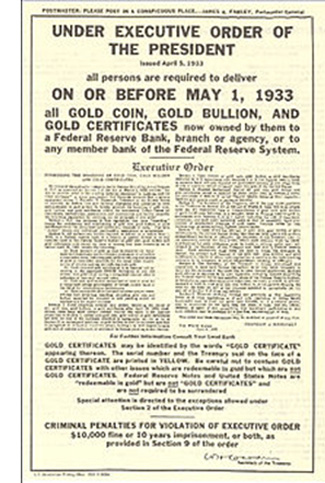Over our working lives, many of us have paid well over 40% of our earnings in various taxes. We believe we have shouldered our fair share. The rest should be ours to enjoy with our family.
We should think again. Savers in the US still face three very serious threats to their wealth.
For the past decade, I’ve studied the legal methods used by successful Americans to protect what they’ve earned. The goals are always the same. To guard their life savings from being taxed away, confiscated, or trapped in the legal system.
In reality, the US has become a very unfriendly place for successful people. Not just the uber wealthy, but entrepreneurs, professionals, and the family next door. Anyone with even a modest net worth is a potential target.
Today, our country has just 5% of the world’s population but is home to 80% of its lawyers. The US spends 2.2% of its GDP on legal costs. That is an 8-fold jump per capita (inflation adjusted) since the 1950s.
There’s Nothing Civil About Being Sued
There are 15 million civil cases filed annually in the US. Most of them are attempts to sue companies and individuals with assets. If you have accumulated assets and have not yet been sued, consider yourself lucky.
But it will take more than luck to keep what you’ve earned. Do not make the mistake of thinking that doing things right and being a good citizen will protect you. It won’t.
US courts generally award damages based on the defendant’s ability to pay and not on the actual cost to the plaintiff. The US legal system is unique in another way. It allows attorneys to advertise and receive contingency fees for taking on cases. The original intent was to provide access to lawyers when the plaintiff had no means to pay for representation. Unfortunately, large, successful class-action suits and excessive punitive damages awarded by juries have attracted lawyers looking for their next payday.
It is normal practice for “contingency lawyers” to target the deepest pockets rather than the most likely culprit. Some attorneys even launch frivolous lawsuits with the sole intent of negotiating a quick and fat settlement out of a wealthy defendant. Average defense costs now exceed $100,000 per case brought to court. No surprise that many defendants will settle to avoid legal fees, stress, and wasted time.
In a world where financial privacy is dead, wealthy individuals, families, and enterprises are seen as easy targets.
The risk to our financial assets does not stop with aggressive lawyers that want a share of our wealth. The other common threat comes from our own government.
Authority Without Limits: Civil Asset Forfeiture and Taxes
More and more federal or state agencies use asset seizures as a way to plug widening holes in their budgets. Their power is alarmingly broad and they can often seize assets without warning. The target of such a seizure is deemed guilty until proven otherwise. They must take these agencies to court and prove their innocence to recover seized assets. Unfortunately, many victims are unprepared or lack the means to recover what is rightfully theirs.
A far more stealth way of seizing assets is through higher taxation and various forms of government confiscation. Although many Americans scoff at the notion, confiscation has happened many times in the US. Here are just a few examples:

- In 1933, during the Great Depression, President Roosevelt issued Executive Order 6102. It declared that the private ownership of gold was illegal. He forced small and large investors to surrender their gold holdings at a bank. They were paid at the then official rate of $20.67/oz. Non-compliance could result in a prison sentence of up to 10 years and a fine of up to $10,000 ($600,000 in today’s money). Less than a year later, the Gold Reserve Act changed the official value of gold to $35. The gold confiscation was thus a disguised tax of 69% on those who had owned gold bullion. It remained illegal to own gold in the US until 1974.
- The US government imposed capital controls during the Great Depression and again during the 1960s. Once wealth is trapped inside the US, it is pretty much at the mercy of the taxing authorities.
- Between 1941 and 1976, the maximum death tax in the US reached 77%. From 1944 until 1963, the highest personal income tax bracket exceeded 90%.
Desperate governments often take desperate measures against their own citizens. They can include gold confiscation, exchange controls, aggressive taxation, exorbitant death taxes, or asset seizures. Such actions often happen during times of war, financial crisis, or economic hardship.
History shows that government money grabs are not new. They have happened with all-too-frequent regularity in countries around the globe. It’s a safe bet that politicians will again “legally” steal the assets of American citizens. And when this happens, hard-working people who have steadily accumulated wealth to support and protect their families will be the targets.
When the going once again gets tough, the mobs—also known as voters—will support taking from the “rich.” All it will take is a crisis serious enough for astute politicians to justify the grabbing.
How far are we from conditions that could warrant such extreme measures? It could be closer than any of us would like. The recent demonstrations and riots seen across the US are sad proof of that.
There Are No Solutions, Only Losers, Don’t Be One of Them
Federal debt will hit $20 trillion very soon. Many states are quasi-bankrupt. Unfunded government liabilities (mostly pensions) are estimated to be more than $100 trillion. That is about 100% of the total value of our national assets. To put that in perspective, federal debt and unfunded liabilities exceed $1 million per taxpayer.
The current demographic trend—too many seniors, too few workers—means we aren’t going to grow our way out of this mess. The only solution is to cut all benefits and pensions dramatically. In 2011, Forbes reported that according to the US Census, 49% of our population received government benefits. The bureaucrats know that benefit cuts would be political suicide.
Career politicians will opt to target and tax an unpopular minority—the so-called “rich.” There is no way they will take benefits away from half the population. We’ve clearly heard that type of rhetoric from several politicians lately, including former President Obama. Candidate Hillary Clinton began to sound increasingly like her socialist rival Bernie Sanders during the election campaign.
Whether or not we like President Trump, his election may have handed us a short-term reprieve from the collectivist movement in the US. Long term, though, I believe the US is on an inevitable path toward more socialism. To fill its empty coffers, state and federal governments must take assets from savers, entrepreneurs, and hard-working professionals.
There is some good news. It looks like we may not see higher tax rates for the next four years. We could even get some sizeable tax breaks.
But make no mistake; before long, the pendulum will reverse and Washington will be coming after your money using very aggressive tactics. Why?
Because the US lacks the political will to reduce its debt burden and make meaningful cuts to programs or benefits.
Anyone who has accumulated a bit of wealth has a very short window—probably no more than four years—to implement well-structured asset protection and estate plans. There are many solutions that can be tailored to your needs; among them are foreign trusts, international life insurance policies, and variable annuities.




